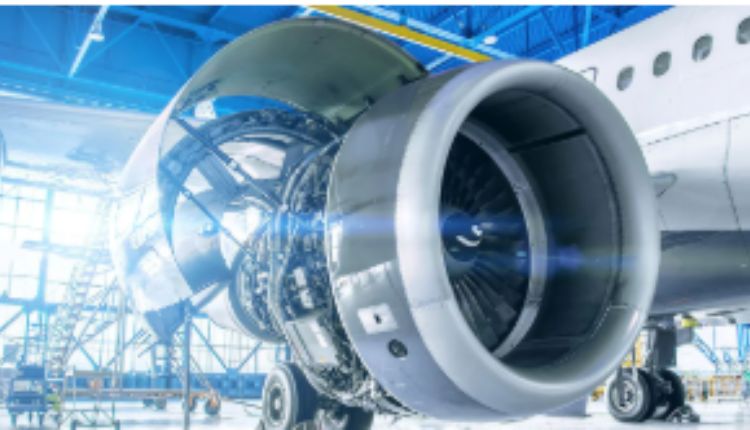Precision parts have become the backbone of technological innovation in two key industries—automotive and aerospace. From manufacturing lightweight, fuel-efficient vehicles to developing cutting-edge aerospace technologies, precision parts are helping engineers and designers push the boundaries of what’s possible. Whether through advancements like CNC machining or revolutionary techniques such as metal injection molding, precision manufacturing plays a central role in addressing modern challenges.
This blog explores how precision parts are transforming these industries, laying a foundation for the future of transportation and exploration.
The Role of Precision Parts in Advancing Automotive Technology
Lightweight and Fuel-Efficient Materials
Automotive engineers face increasing pressure to produce vehicles that are both environmentally friendly and cost-efficient. Precision parts derived from technologies like metal injection molding and CNC machining enable manufacturers to create more lightweight vehicles without compromising durability.
For example, metal injection molding allows manufacturers to craft highly complex geometries in small components that are lighter and stronger than traditional alternatives. These precision parts reduce automotive weight, which directly improves fuel efficiency and lowers emissions—both of which are critical in meeting environmental regulations.
Enhanced Safety Features
Precision engineering is crucial in improving vehicle safety. Parts like precision fasteners, gear systems, and sensor housings ensure that critical systems such as airbags, anti-lock braking systems (ABS), and traction control operate flawlessly under extreme conditions.
Additionally, the automotive sector increasingly integrates advanced driver-assistance systems (ADAS), which require meticulously crafted parts to house complex electronics like radar sensors and cameras. This precision parts guarantee reliability, ensuring that ADAS systems function accurately and minimize the risk of accidents.
E-Mobility and EV Advancements
The rise of electric vehicles (EVs) has increased the demand for precision parts tailored to new applications like battery technology, lightweight frames, and regenerative braking systems. Because energy efficiency is central to EV success, engineers are increasingly turning to advanced machining and molding methods to design compact, high-performing components.
For instance, intricate electrical contacts and heat-dissipation elements designed using metal injection molding suppliers align perfectly with the goals of EV manufacturers, who require components that are ultra-precise, durable, and cost-efficient.
Revolutionizing Aerospace Through Precision Engineering
Higher Performance Under Extreme Conditions
The aerospace industry operates under some of the harshest conditions imaginable. Components must withstand extreme temperatures, pressures, and prolonged stress without degrading. Precision parts allow engineers to design elements like turbine blades, landing gear, and control systems that meet the exacting standard required to operate in such environments.
One notable example is additive manufacturing, often referred to as 3D printing, which allows for the production of complex aerospace structures that are lightweight and resilient. High-strength materials such as titanium alloys are often utilized alongside precision techniques to ensure functionality and safety.
Fuel Efficiency and Reduced Environmental Impact
Much like the automotive industry, aerospace is also focused on fuel efficiency and sustainability. To achieve these goals, precision machining and advanced manufacturing techniques are used to produce engine components that enhance aerodynamic performance and conserve fuel.
Furthermore, technologies such as metal injection molding allow the creation of lightweight parts that are instrumental in reducing overall aircraft weight. Lower weight leads to less drag and, consequently, reduced fuel consumption.
Innovation in Space Exploration
Precision parts are pivotal to the advancements being made in space exploration initiatives. From spacecraft components like satellite housings to miniature propulsion devices, precision engineering designs parts that operate efficiently and reliably in the vacuum of space.
For example, cutting-edge metal injection molding methods have allowed engineers to create smaller, high-performance rocket components, enabling more compact designs for satellite launches and deep-space missions.
The Key Role of Metal Injection Molding in Precision Manufacturing
Metal injection molding (MIM) is one of the standout methods in the development of precision parts for both automotive and aerospace sectors. This technique remains highly valued for its ability to create intricate shapes with incredible accuracy, all while maintaining production efficiency.
With high material utilization and the ability to work with a wide variety of materials, MIM enables manufacturers to meet tight tolerances and produce complex geometries. The result is components that provide exceptional strength and functionality, even in demanding sectors like aerospace.
If you’re a manufacturer or engineer looking to explore cutting-edge precision solutions, metal injection molding suppliers are an excellent resource for optimizing your designs.
The Future of Precision Parts in Automotive and Aerospace
As technology continues to advance, the applications for precision parts will only grow. Innovations like AI-driven design optimizations, additive manufacturing, and advanced material science will likely redefine the limits of what precision parts can achieve.
The integration of these parts not only drives efficiency and innovation but also strengthens industries’ abilities to meet global challenges, such as sustainability and emerging mobility demands. Ultimately, precision parts underscore the collaborative relationship between design, engineering, and manufacturing to shape a more advanced and efficient future.
Final Thoughts
Precision parts are far from just small components; they are the essential building blocks behind some of the most advanced technologies in automotive and aerospace industries. By leveraging cutting-edge techniques like CNC machining, additive manufacturing, and metal injection molding, engineers are building vehicles and aircraft better suited to meet modern-day challenges.
As we look forward, it’s clear that precision manufacturing will remain a critical factor in advancing innovation, helping businesses and industries to soar—literally and figuratively.
- Metal molding suppliers
- parts in
- Fuel efficiency innovations
- Advanced manufacturing






